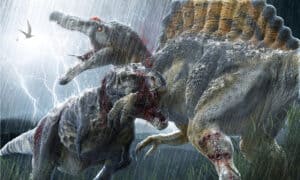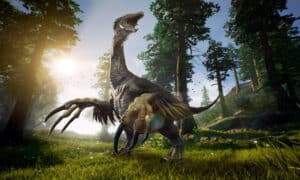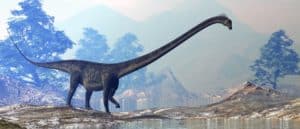Georgia is known for its diverse environments like mountains, plains, and swamps that rapidly transition throughout a relatively small area. This state has been home to different ecological zones during its long history. The complex environmental and geological history of Georgia has made it hard to find evidence of terrestrial creatures, like dinosaurs, in the state. Nevertheless, this article will explore the three dinosaurs that lived in Georgia.
You’ll learn what dinosaurs lived in the state and where you can see fossils of them today. First, though, we’re going to explore the state dinosaur or fossil of Georgia.
What Is Georgia’s State Dinosaur?
Over half the states in the U.S. do not have a state dinosaur, and Georgia is among them. However, Georgia does have a state fossil, the tooth of Otodus megalodon, formerly Carcharocles megalodon and colloquially called the megalodon. The state fossil was adopted in 1976 at the same time that staurolite became the state mineral and quartz became the state gem.
Megalodon was a massive shark, possibly the largest fish to ever live. These creatures lived between 23 million and 2.5 million years ago. They could measure between 30 and 58 feet long or more and weigh between 60,000 to 140,000 pounds! Those are just some estimates, though. We’ll never know the actual size of a megalodon. However, their teeth measured 7 inches long, and their bite diameter could reach nearly 10 feet across.
Now that we’ve looked at the state fossil of Georgia, let’s consider some of the dinosaurs that lived in Georgia.
What Are the 3 Dinosaurs That Lived in Georgia?
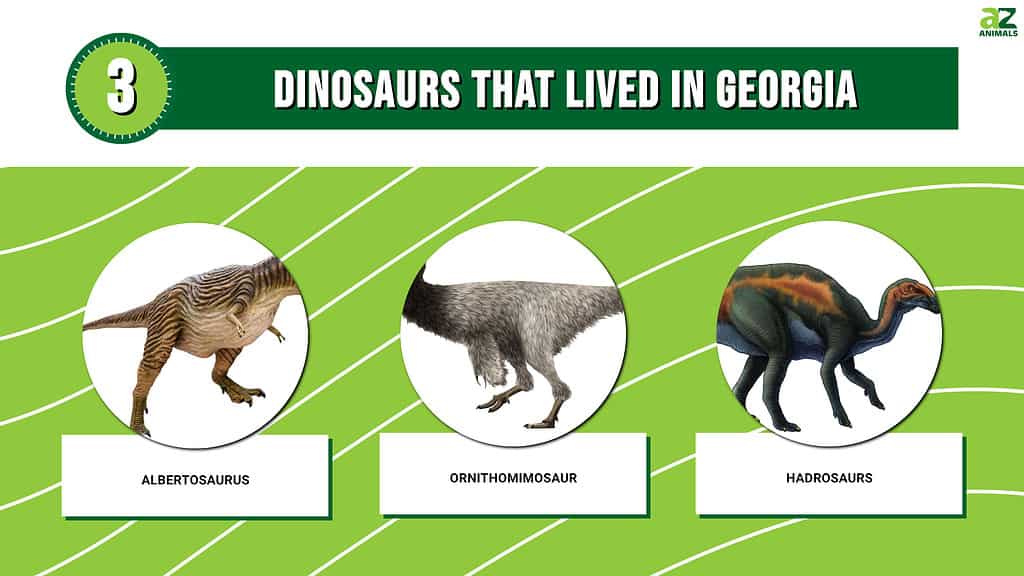
Paleontologists have recovered fossils from only three different dinosaurs in Georgia. One of them was identified down to its genus while the others were merely identified by their respective families or clades.
Many dinosaurs have been found in other nearby states like Alabama, Florida, and Mississippi. However, Georgia’s geological record during the Mesozoic age is poorly preserved. Many parts of Georgia were covered in water throughout this time, and the Triassic and Jurassic ages left behind very few sedimentary deposits.
Fortunately, dinosaurs did live near the coastal regions of the state, and that is where their fossils formed.
1. Albertosaurus
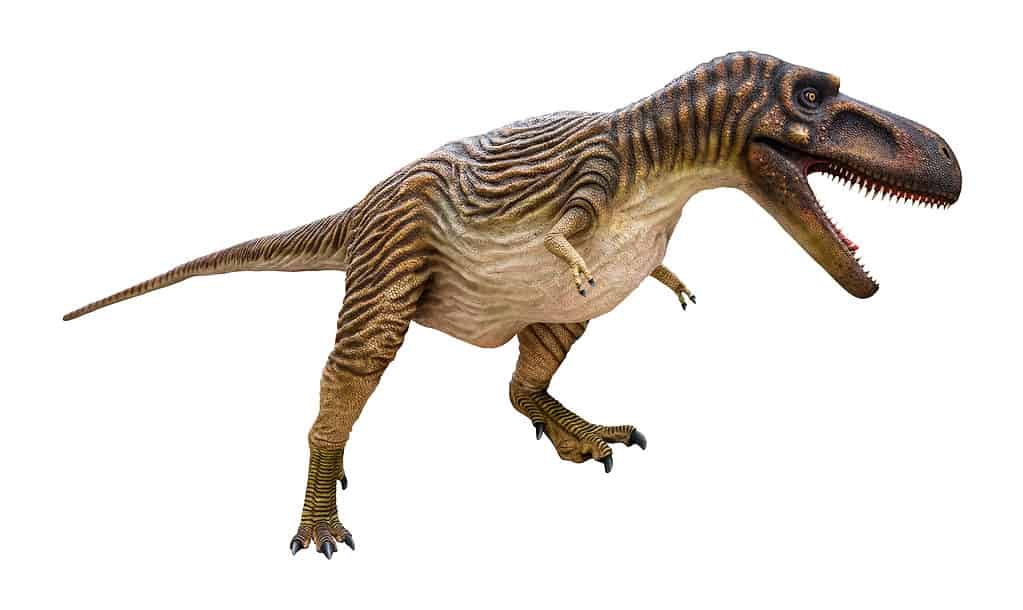
Albertosaurus is a carnivore genus of Tyrannosaurid theropod dinosaurs that lived in the Late Cretaceous Period.
©YuRi Photolife/Shutterstock.com
Albertosaurus fossils were found in the Blufftown Formation in western Georgia. However, paleontologists were not able to identify the species of the dinosaur. Nevertheless, Albertosaurus is a member of the Tyrannosauridae family. That means the creature was a huge bipedal predator with a large head, powerful bite, and the potential to act as an apex predator.
This dinosaur was probably the deadliest of any dinosaur that lived in Georgia. The largest species of Albertosaurus grew about 25 to 30 feet long and stood about 11 feet tall at the hip. They could weigh between 3,000 and 6,000 pounds at that size.
The fossils of the other two dinosaurs that lived in Georgia were not complete enough to provide as much insight as Albertosaurus.
2. Ornithomimosaur
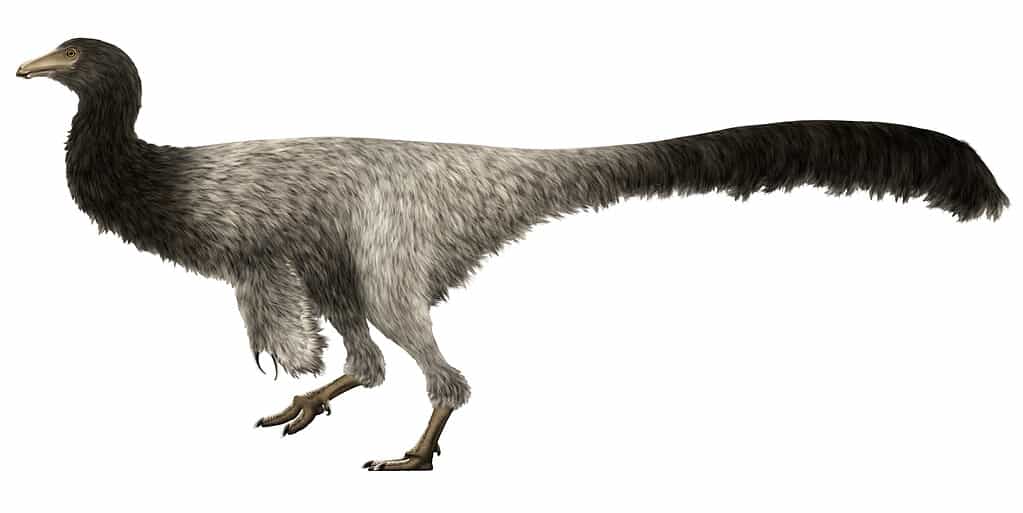
Members of the clade Ornithomimosauria are called bird-mimic lizards because they may have looked like the modern ostrich.
©Paleo Neolitic / CC BY 4.0 – License
The dinosaur fossils from the clade Ornithomimosauria were also found in the Blufftown Formation located in western Georgia. Unfortunately, the remains were not enough for paleontologists to conclude what species of dinosaur they had discovered.
Members of this clade are called bird-mimic lizards because they may have looked like a modern ostrich. They were bipedal theropods that were possibly herbivorous or omnivorous.
3. Hadrosaurs
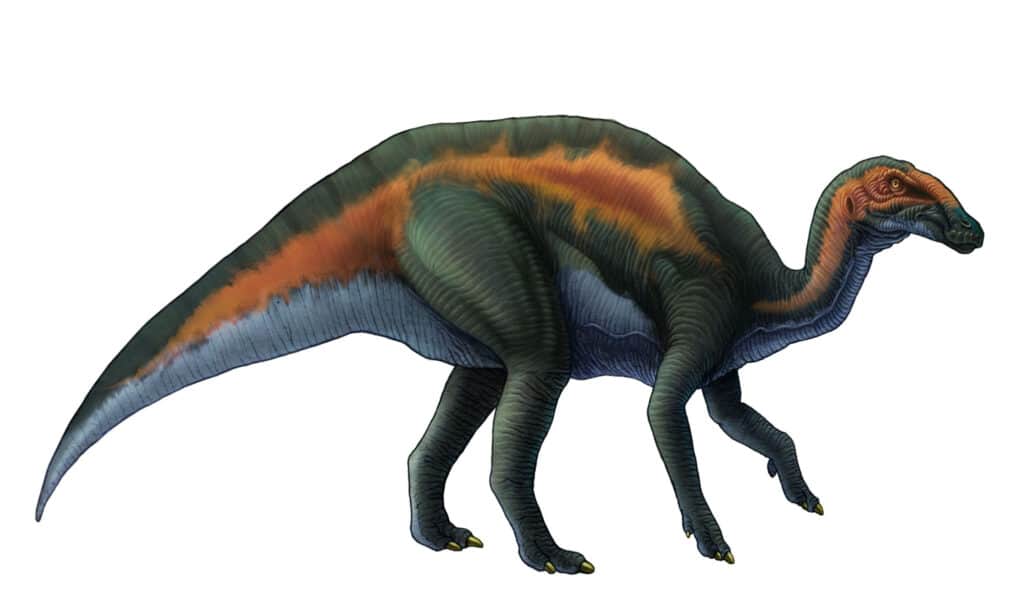
Hadrosaurs were known as duck-billed dinosaurs.
©Bee_acg/Shutterstock.com
Lastly, scientists discovered at least two different sets of hadrosaur fossils that were from different periods. Hadrosaurs were known as duck-billed dinosaurs, and they could range in size. Hadrosaurs were primarily herbivores, and they walked on four legs most of the time, but they could use their forelegs to help them stand and reach taller vegetation.
Based on the location where the fossils were discovered, some believe that the remains may have belonged to the genus Lophorhothon. However, there is not enough information to make that distinction.
Having examined the three different dinosaurs that lived in Georgia, it’s time to consider other prehistoric animals that once lived in the area.
What Other Prehistoric Animals Lived in Georgia?
Georgia’s fossil record started to improve with the arrival of the Cenozoic era. As a result, scientists discovered a wide assortment of different animals that thrived throughout the state at various times. Take a look at some of the largest, coolest animals from Georgia’s most recent historical period.
1. Megalodon
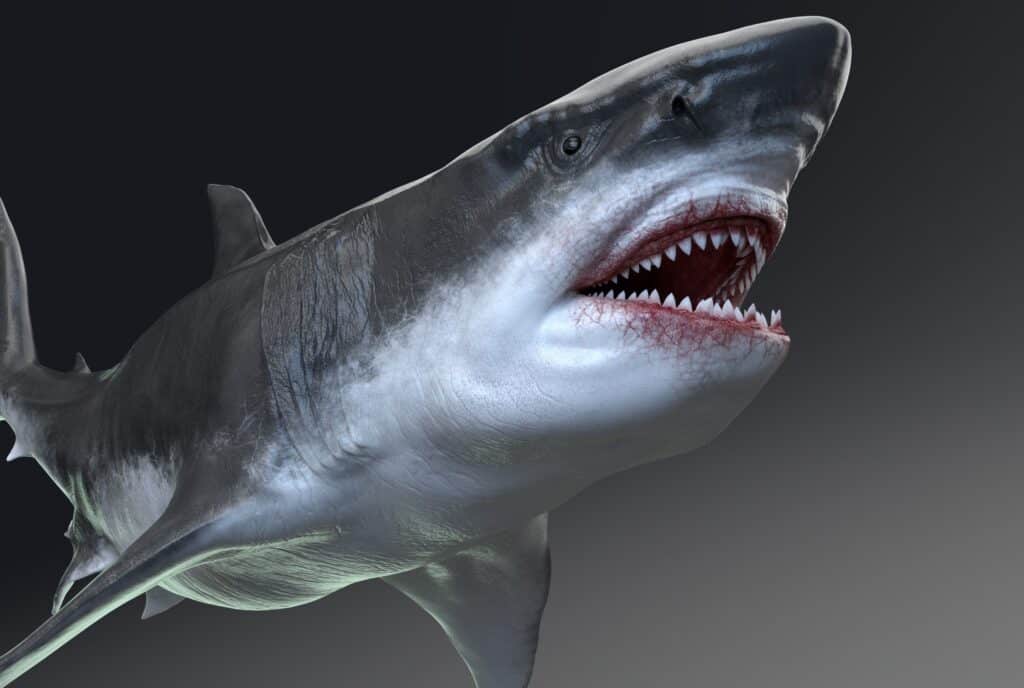
Megalodon’s extinction could be due to many different factors.
©racksuz/Shutterstock.com
Teeth from Otodus megalodon are Georgia’s state fossil, and they’ve been found in many places throughout the state. This massive shark went extinct between 23 and 2 million years ago. Scientists believe that it measured up to 50 feet or more and had a jaw that measured between 8 and 10 feet wide and over 6.5 feet tall!
2. American Mastodon
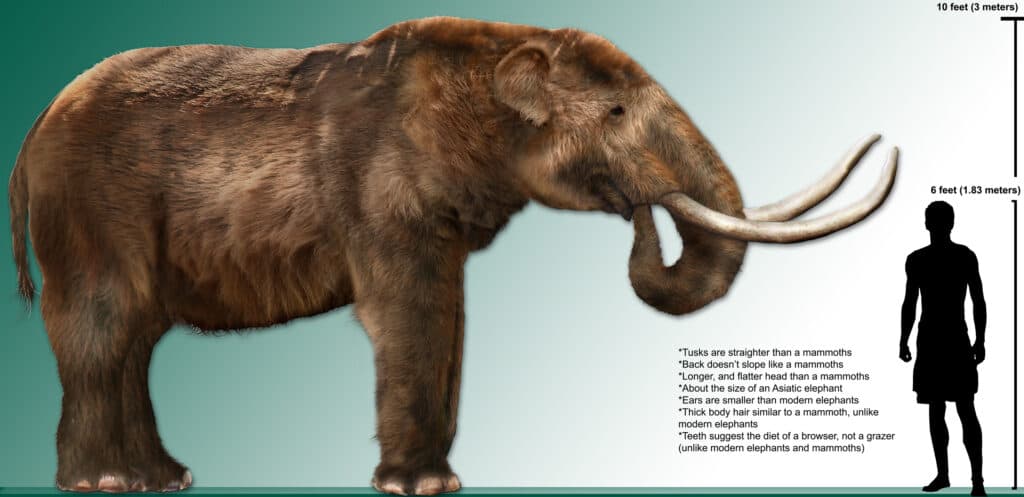
Mastodons went extinct between 10,000 and 11,000 years ago.
©CC BY 3.0 / Dantheman9758 – License
The American mastodon was a large, elephant-like creature that lived in herds and was famous for its massive tusks. This creature could grow between 7 and 10 feet tall and weigh 12,000 pounds far more. They are known for their low-domed heads that sets them apart from other creatures like mammoths. Mastodons went extinct between 10,000 and 11,000 years ago.
3. Megatherium
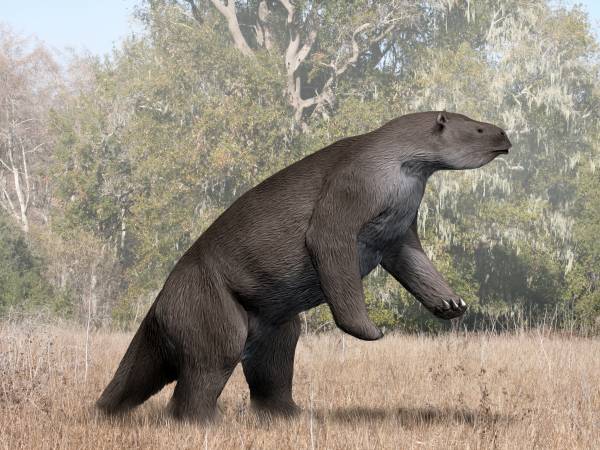
Megatherium americanum looked like a very large tree sloth with less hair and seven-inch long claws.
©Nobu Tamura email:[email protected] http://spinops.blogspot.com/ / CC BY-SA 4.0 – License
Megatherium americanum, commonly called giant ground sloths, truly lived up to their names. These sloths were not the same creatures we know today. They weighed up to 8,800 pounds, stood about 7 feet tall, and could measure about 20 feet long including their tails. While this creature was a slow-moving herbivore, it still had long, sharp claws that would match most would-be predators.
Where Can You See Fossils of Dinosaurs That Lived in Georgia?
The Tell Us Museum is a great spot to look at fossils of dinosaurs that lived in Georgia and more! Located in Cartersville, Georgia, visitors can see a fossilized battle between dinosaurs, witness the true size of a megalodon, and learn about other giant mammals that called the state home!
The Fernbank Museum of Natural History is another great place to see fossils, walk by dinosaur reconstructions, and learn about the evolution of culture in the area.
Make sure to look up the hours and days that each museum is open and then plan your trip!
Summary of 3 Dinosaurs That Lived in Georgia
| Name | Family | Size |
|---|---|---|
| Albertosaurus | Tyrannosauridae | 25-30 feet long; between 3,000 and 6,000 lbs. |
| Ornithomimosaur | Ornithomimidae | 7-26 feet long; 450-1,550 lbs. |
| Hadrosaur | Hadrosauridae | 23-26 feet long; 4,400-8,800 lbs. |
The photo featured at the top of this post is © Noiel/Shutterstock.com
Thank you for reading! Have some feedback for us? Contact the AZ Animals editorial team.



